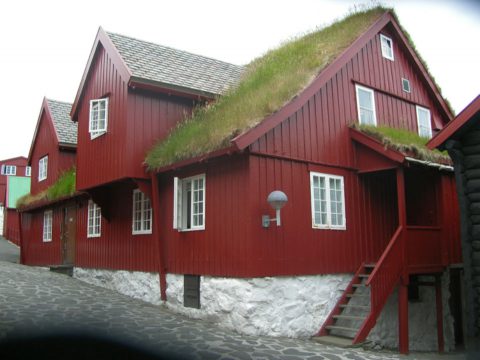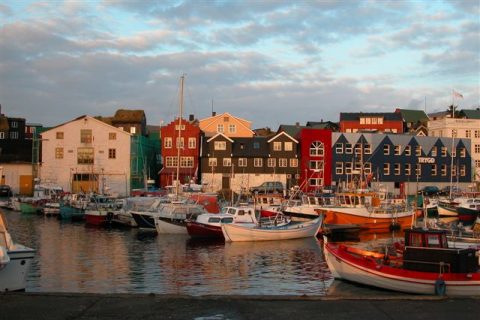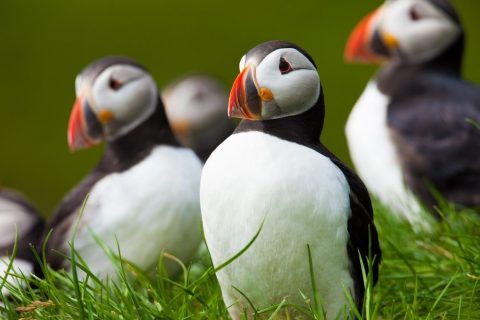Key time to cruise: May-October
What we enjoyed: Dramatic islands in the middle of nowhere with a proud history.
The Faroe Islands are a definite must for those who enjoy being surrounded by nature. The Islands offer incredible opportunities to see stunning scenery and wildlife.

A traditional Faroe old black tarred house with grass roof and white paned windows.
The Faroe Islands comprise of 18 islands between the Norwegian Sea and the North Atlantic Ocean. The islands are an autonomous country within the Kingdom of Denmark. The archipelago is very rugged and has a subpolar oceanic climate: windy, wet, cloudy and cool. Despite its northerly latitude, temperatures average above freezing throughout the year.
The Faroe Islands are undeniably beautiful: green, rugged and wind-swept. Some of key points of interest are outlined below:

The colourful city of Torshavn.
The capital city of Tórshavn is a great starting point for any visit. It is one of the smallest and most colourful capital cities in the world. One of the best locations within Tórshavn is the harbour Vágsbotnur, which is a hub of activity. The harbour is a fantastic place to begin exploring the city, which offers a mixture of the old and new.

Atlantic puffins are just one of the many birds, which can be seen in the Faroe Islands.
The Faroe Islands are rich in wildlife, especially with birds. Over 300 different species live on or visit the islands. On the island of Nólsoy the worlds largest colony of storm petrels can be seen. On the island of Mykines thousands of migrating birds can be seen during the summer. Puffins, guillemots, cormorants, razorbills and gannets are just some of the birds you can see.
Our team will help create the perfect itinerary to ensure the many wonderful aspects of the Faroe Islands are enjoyed.
Contact us today to find out more.